When it comes to the 1980s, there is no shortage of serviceable horror flicks to max out your nostalgia meter and remind us all why that particular decade reigns supreme for us horror hounds. While the 70s may have perfected the slasher with John Carpenter’s Halloween and The Texas Chainsaw Massacre– The 80s delivered on bringing to life some of the greatest creations in the genre. A dream stalking killer with knives for fingers, a summer camp slaughter committed by a giant in a hockey mask, a sadistic demon who loves pain as much as pleasure, and who could forget the slew of iconic and cult status slashers that have spawned franchises still trucking along today. I’m looking at you Leprechaun. But today, my friends, we’re going to be discussing a different kind of horror movie. A movie that breaks the mold from the prototypical horror outing. A creation written by someone outside of the industry that produced a film that exceeded the standards of unsettling cinema. Basically, today we’re talking about 1987’s The Stepfather (watch it HERE) and why I’m obsessed with it.
The Stepfather follows the story of Jerry Blake (not his real name) as he pursues his life’s ambition of having the perfect family with the ideal suburban setup. Nice house, backyard barbecues, children, love, homecooked meals, and of course… cold blooded murder. As the film unfolds, we’re given just a small taste of this character’s motivation and backstory to be properly terrified of this ambiguously driven family man. Where other films of this era focused on killers who wear human faces for masks or have supernatural abilities that allow for multiple sequels and diminishing stakes for the killer- this film wants to show you what evil would look like if it was hiding in plain sight. In fact, The Stepfather shows you something that many kids grow up being afraid of- a new parental figure that you don’t know and can’t trust.
I love this movie. It has so many qualities that stand the test of time and truly tested audiences and our willingness to enjoy a more subdued pseudo-slasher that cares more about the characters than the frights. In turn, this actually makes the film more scary. Of course, today we’re going to watch the movie and breakdown why after nearly 40 years- The Stepfather still gives me goosebumps. I’m Kier with JoBlo Horror Originals, and you’re watching Deconstructing.
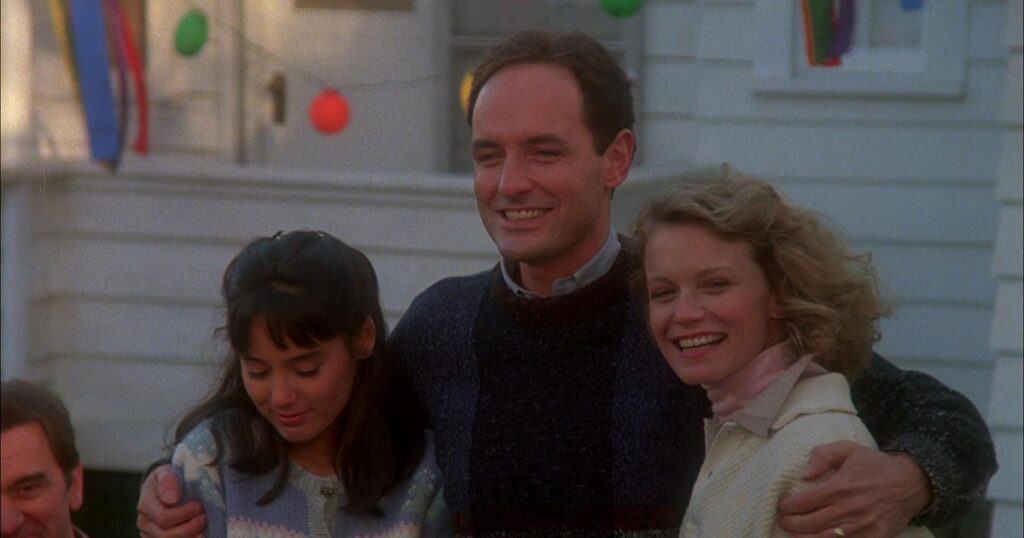
The Stepfather was written by American novelist Donald E. Westlake, who, at the time had never written a screenplay for a film. The film is not based on a specific novel, but rather a story written by Westlake and his collaborators to be adapted for film. His works have been adapted by many, notably The Grifters – but none have had the lasting impact of The Stepfather. And I believe this is for many reasons. It’s one of those movies that sets a tone early on and builds off that tone to its inevitable conclusion. It’s a quiet movie with beautiful and peaceful visuals and some scenes that feature nothing more than a couple of characters just talking. Between the fact that most of this movie is free of any actual violence, and that director Joseph Ruben set the story to take place mostly in broad daylight- the sinister nature of the movie all hinges on the characters, the context, and the implied origins and motive of a man who habitually slaughters innocent families.
Man, there is just so many things to breakdown in today’s show- And, I’m going to make a small amendment to the structure of our breakdown. Rather than our usual layout, today we’re going to be analyzing the film through use of our four step-categories. First, we’ll cover a brief origin of the film and how it went from a spooky novel written under an alias, to the big screen and into the zeitgeist of classic films from the decade. Then we’re going to discuss the film’s legacy in a very short segment before we take on a bonus category for today with breaking down the film’s characters. Usually with slasher films the only characters with any real depth are the coveted final girl or final guy character, and in many cases, the killer is the main draw. This movie’s characters deserve a small analysis for each one because they’re all important in their own right, and there are only a handful of them. Then we’re going to break out some JoBlo Horror movie trivia to lighten the mood before we get to the main event- The X-Factor. Where we talk about the one thing that this movie does to solidify its place in my heart and the hearts and minds of many who love this gem of a film. If you’re ready than make sure to get your story straight and drop a like on the video and let’s hit play on The Stepfather.
ORIGIN
In 1971, a local New Jersey accountant by the name of John List would murder his entire family before vanishing and beginning a new life with a new family under an alias for nearly twenty years before being arrested for his crimes. List was living a brand-new suburban life complete with a wife and kids when his neighbor recognized him from America’s Most Wanted and called in a tip to the police. Between the shock value of a story like that, and the insane amount of planning, luck, and skillful manipulation that it takes to pull off such a crime- Westlake felt that he had the perfect elements for a thrilling tale about a family man who won’t settle for anything less than the American Dream.
By the year 1985, the film’s screenplay was written and had received multiple passes from Westlake, Carolyn Lefcourt, and Brian Garfield. Director Joseph Ruben, a filmmaker whose gone on to bring us films like Sleeping with the Enemy and The Good Son– saw this screenplay as a unique approach to an otherwise well-explored subgenre. The movie shot in Vancouver, British Columbia, Canada during the fall which provided the idealistic autumn atmosphere that the film is set in. The shoot was seemingly free of drama and went smoothly with the cast enjoying their time on set. Iconic actor Terry O’Quinn (or as most know him, John Locke from Lost) plays the lead role as The Stepfather. His name, appearance, job, and personality changes with every new family- but O’Quinn spends most of this movie’s runtime as Jerry Blake. A charming, unassuming realtor who is suspected by his teenage step-daughter to be more than just the Mr. Rogers of real estate. His portrayal in this first Stepfather movie is unsettling because of his subtle reactions to the movies many attempts to uncover his disguise. When his new persona starts peeling away, the people around him will grow increasingly suspicious of Jerry and the slow-yet-enjoyable unraveling is nothing short of entertaining.
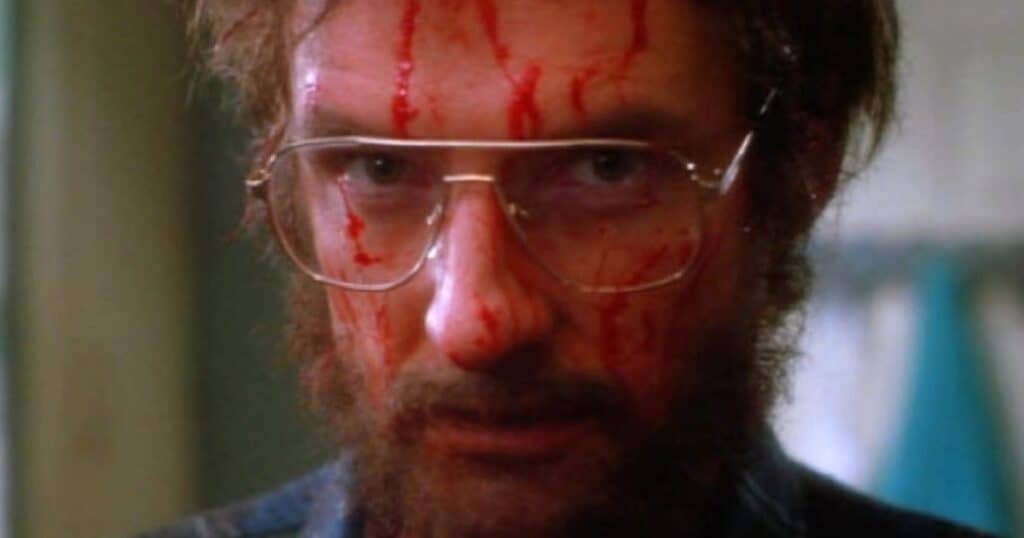
Upon being released in January of 1987, the film was not a commercial success financially, but was well received by the majority of critics who reviewed it. This of course is with the exception of the late great Roger Ebert who felt that the film was an attempt to sell violence on its own without a story or context to support it. He quotes: “Violence itself seems to sell at the box office, even when it’s divorced from any context. Maybe that’s what the filmmakers were thinking. What often happens though, is that in an otherwise flawed film, there are a couple of things that are wonderful. The Stepfather has one wonderful element, Terry O’Quinn’s performance.”
Now, I’m going to strongly disagree with Ebert’s statement. I actually think the context of the movie is what makes it so unsettling and wonderful. The movie’s opening scene (which we will talk about soon) provides us as an audience with enough to chew on for the rest of the film because it efficiently sets up our main character without any exposition, or a single line of dialogue. The opening scene is the context to the rest of the story, so when the middle portion of the film dips more into dramatic family dynamics and less into the blood and guts, we feel a bubbling anxiety and fear that at any moment, the cycle will repeat. It’s the way the movie doesn’t give you the answers that draws you further and further in. Seriously, this is one of the cleanest and most simple screenplays I’ve seen in a pseudo-slasher film which are notoriously simple in nature as it is. Now, let’s talk a little bit this movie’s legacy and characters.
LEGACY and Characters
Okay, now as for the legacy of this movie- let’s keep it real. The Stepfather 2 was released in 1989 and was a direct sequel to the original film that would once again star Terry O’Quinn as The Stepfather. I watched this movie for research and realized after the fact that the story of The Stepfather really just works best as a single standalone feature. The following installments would grow increasingly unbelievable to the point where The Stepfather 3 tried to continue the story with a different actor and muscled in an explanation that Jerry had facial reconstructive surgery to change his face- unfortunately, that’s nothing even close to what it takes to match this movie. Other than the 2 direct sequels, there was a 2009 remake which I have not seen and don’t really plan to. There just isn’t a need for me to watch this story play out anywhere other than this first movie- as it’s become one of my favorite thrillers of all time. And part of what makes the film work so well is the simplicity, yet attention given to its core characters and supporting characters. So let’s talk about them.
We’ve covered Jerry, right? Well, not enough. See, the thing that makes Jerry Blake different from someone like Michael Meyers is that he isn’t an aimless serial killer who hurts people for fun. He’s actually more of a charming straight man type who has motivations well-beyond inflicting pain. Jerry is after one thing from the looks of it- the good life. He wants a nice place to live, a beautiful wife and kids, and even a scruffy little pooch for his teenage daughter. The problem is that Jerry’s past keeps catching up to him, and in order to preserve his quality of life he… does this.
The thing I like about Jerry as a villain is the same thing that I liked about the first season of the show You. There’s an inherent earnestness to wanting a wholesome family life, and if our killer’s motivation is to create the safest and most loving family possible- and his means of getting there are the exact opposite- we have something interesting and a character that you can almost feel for in a certain way.
You know who doesn’t feel for Jerry? His daughter, Stephanie- played by horror legend Jill Schoelen. Steph is the only character who is immediately suspicious of Jerry and she confides her feelings in her therapist. Her whole deal is that her dad is dead and she isn’t thrilled about the relationship Jerry has built with her mom. She knows that there is something not right about Jerry despite his many attempts to throw her off his trail. When she comes close to finding the truth, Jerry kills her therapist and even goes as far as to plant a fake photo of a different person from his previous killings to convince her that he was not involved. Stephanie’s character is a perfect foil to her mother Susan, who is so lonely and desperate for love that she doesn’t take any of her daughter’s fears seriously until it’s almost too late. Susan is not a fully three dimensional character but I think this film does well at giving her enough screentime to establish that she’s possibly overlooking Jerry’s red flags on purpose because she (like Jerry) doesn’t want her family to fall apart.
We also have some side- characters like Doctor Bondurant, Steph’s therapist and the first person we actually see Jerry murder. This character is much more than just another body for Jerry to dispose if- but he’s also the only person that believes Stephanie’s fears. We also have Jerry’s ex-brother-in-law who is tracking him down after Jerry’s opening murder, and we have a few even smaller characters to help us flesh out this world. These characters are more textured and layered than similar characters would be in subsequent films and other slashers of the era and that makes this film feel more well-rounded and it makes the deaths of certain characters more impactful.
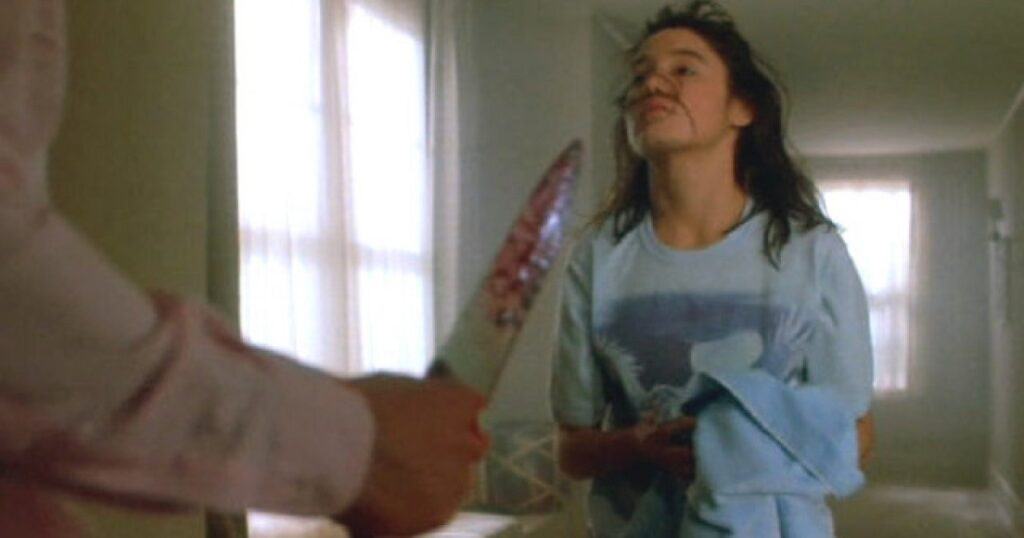
TRIVIA
Going back to the film’s writer, Donald Westlake- part of the inspiration for Stephanie’s character was based on Westlake’s own stepdaughter- who struggled with accepting Westlake as a family member. Of course, Jill Schoelen brought a lot of great material to the role and even did her own stunts during the film’s intense final confrontation. You go, girl.
And before we move on to the finale, let’s see if you can answer this question:
What classic novel was Jill seen reading while her parents watch TV in their room:
- The Outsiders
- The Catcher in the Rye
- Pride and Prejudice
- The Shining
Comment your answers down below!
X-FACTOR
Okay, it’s like this- There’s three X-Factors for this movie that I think all need a bit of highlighting. I will be narrowing it down to just one, but there’s a few things I want to get into first.
First, I love the scene at the barbecue where Steph is in the basement when Jerry comes down and unknowingly breaks into an unhinged state in front of her. There are a couple different scenes sprinkled throughout the film that show our guy struggling to hold it together while he’s constantly trying to be normal. The first time we see this is in front of Stephanie and it really is the first time we see this side of Jerry. The scene works well because it reminds the audience that this polite and living man that we’ve been watching is indeed a maniac.
I also think a close contender for the X-Factor is the scene where Jerry says this line: “Wait a minute… Who am I here?”
This scene is the last moment of Jerry’s facade that we witness before he goes full-blown homicidal. I like this because of what it says about Jerry’s mental state when he does what he does. He tries to hold everything together and we’re to assume that if he would’ve avoided suspicious, this never would have happened. But the real kicker is that it shows us that Jerry has already made the decision to kill his family. He rents a new house in a new town and gets a new job and identity before returning home to Susan- who confronts him for his behavior. Moments before the confrontation, Jerry is whistling, smiling and joking around- but at the drop of a hat, Jerry unhinges. It is so fucking disturbing.
But of course, the true X-Factor and the absolute standout element of this film, is the opening scene. Seeing Terry O’Quinn doing a completely normal looking morning routine moments before a wide tracking shot that reveals the sinister and blood-soaked living room that served as his family’s unceremonious grave. This one scene sells the movie in opinion. It shows you that there is an unspeakable evil within this person that, perhaps most frightening of all, blends in seamlessly to the colorful, bright, and safe atmosphere that the journey will take you through. It truly is one of the most unsettling 80s films ever made- and if you haven’t seen it- then it’s clear that all we need is a little order around here.
A couple of the previous episodes of Deconstructing… can be seen below,. To see more episodes, and to check out our other shows, head over to the JoBlo Horror Originals YouTube channel – and subscribe while you’re there!






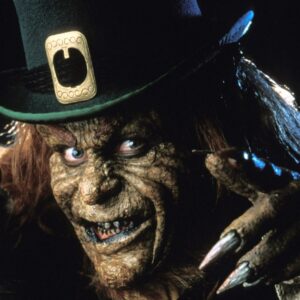
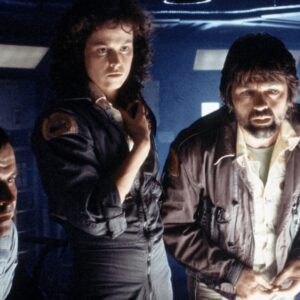

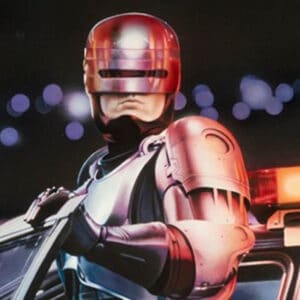
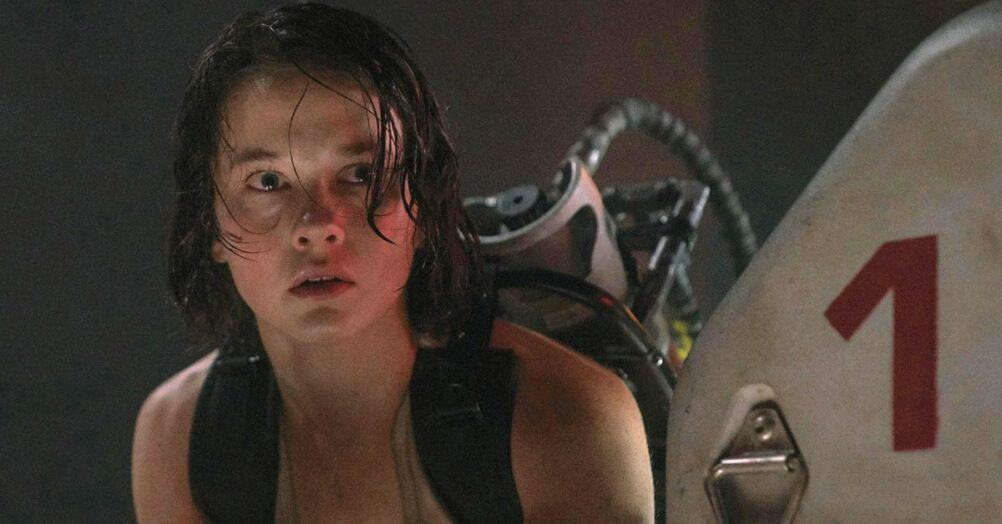


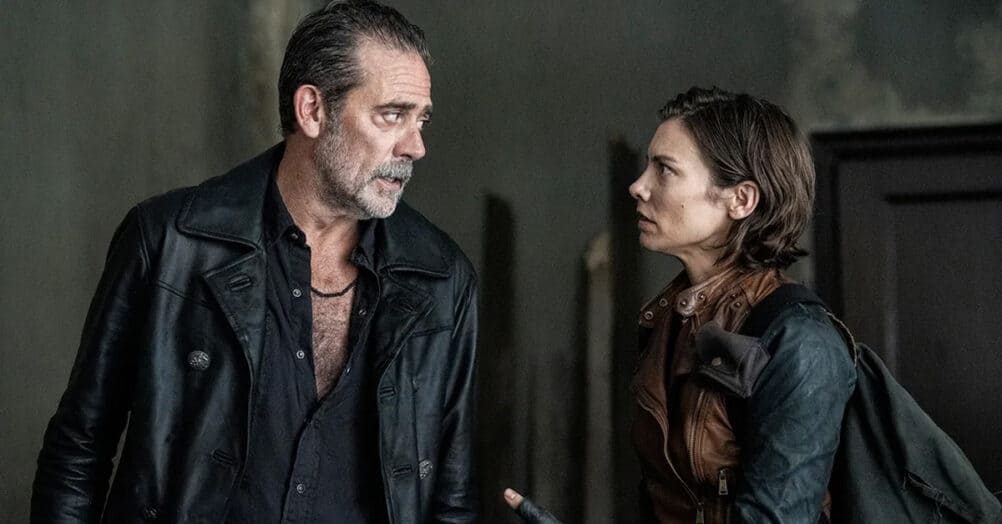
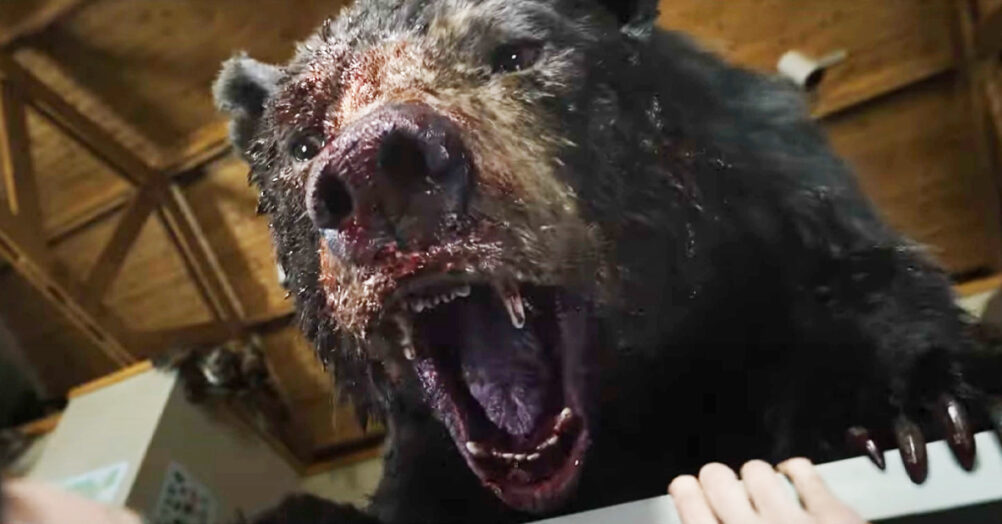

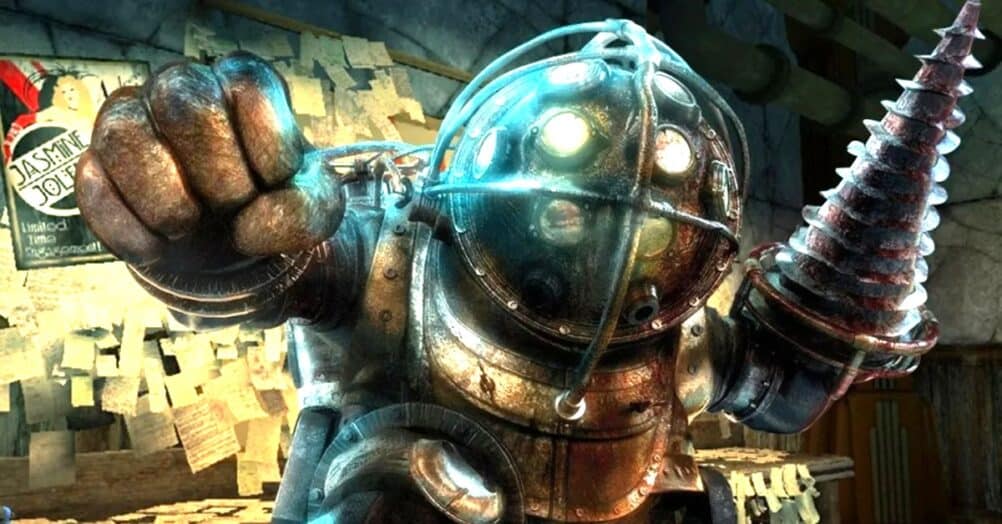
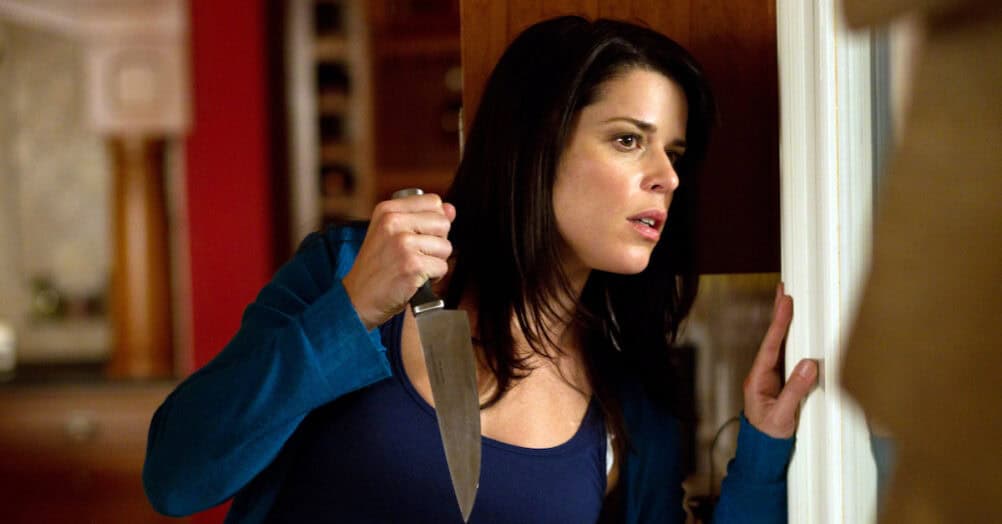


Follow the JOBLO MOVIE NETWORK
Follow us on YOUTUBE
Follow ARROW IN THE HEAD
Follow AITH on YOUTUBE